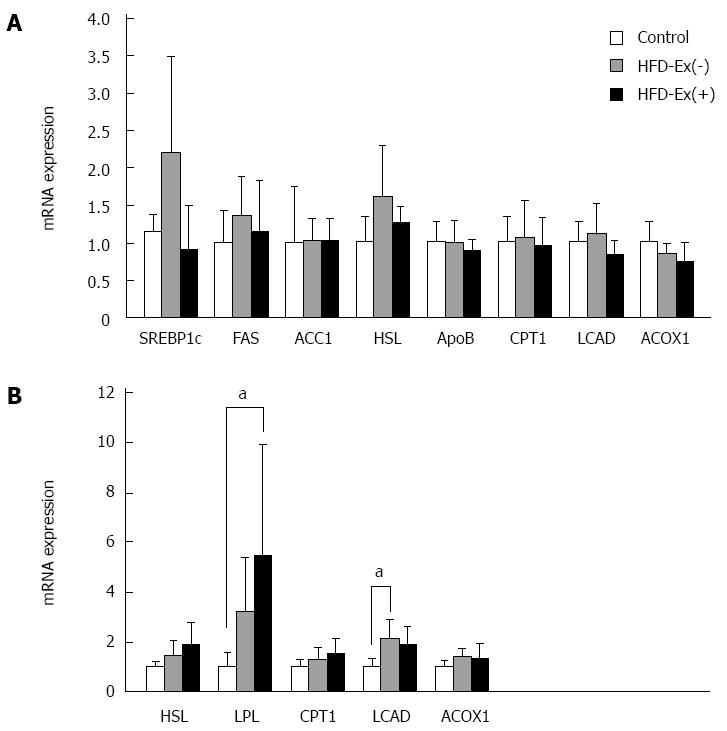Copyright
©2014 Baishideng Publishing Group Co.
World J Gastroenterol. Mar 14, 2014; 20(10): 2653-2663
Published online Mar 14, 2014. doi: 10.3748/wjg.v20.i10.2653
Published online Mar 14, 2014. doi: 10.3748/wjg.v20.i10.2653
Figure 4 Effects of glucagon-like peptide-1 on the expression levels of genes associated with lipid metabolism in the liver and skeletal muscle.
A: In the liver, there were no significant differences in the expression levels of sterol regulatory element-binding protein-1c (SREBP1c), fatty acid synthase (FAS), acetyl-CoA carboxylase-1 (ACC1), hormone-sensitive lipase (HSL), and apolipoprotein B (ApoB), carnitine palmitoyltransferase-1 (CPT1), long-chain acyl-CoA dehydrogenase (LCAD), or acyl-CoA oxidase 1 (ACOX1) among the three groups; B: In skeletal muscle, the expression of LPL was significantly greater in the high-fat diet (HFD)-Ex(+) group than in the control group. There were no significant differences in the expression levels of HSL, LPL, CPT1, LCAD, or ACOX1 between the HFD-Ex(-) and HFD-Ex(+) group. The fold changes were calculated as the ratio of the expression level in the HFD-Ex(+) or HFD-Ex(-) group to that in the control group. n = 8, aP < 0.05 between groups.
- Citation: Tanaka K, Masaki Y, Tanaka M, Miyazaki M, Enjoji M, Nakamuta M, Kato M, Nomura M, Inoguchi T, Kotoh K, Takayanagi R. Exenatide improves hepatic steatosis by enhancing lipid use in adipose tissue in nondiabetic rats. World J Gastroenterol 2014; 20(10): 2653-2663
- URL: https://www.wjgnet.com/1007-9327/full/v20/i10/2653.htm
- DOI: https://dx.doi.org/10.3748/wjg.v20.i10.2653









